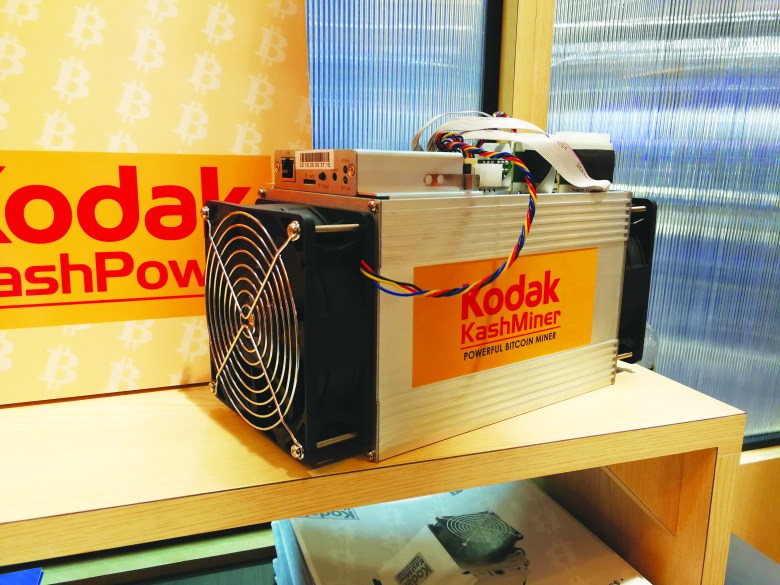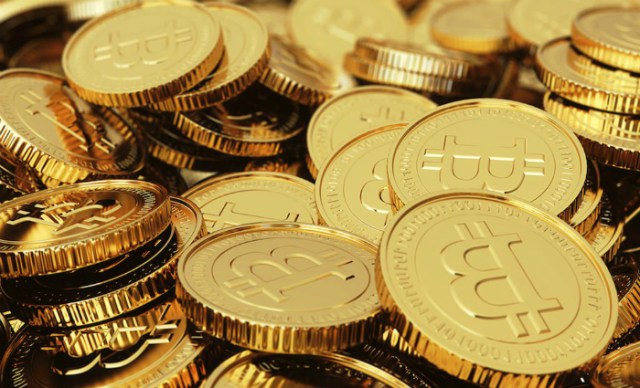
Look – it is a banking revolution, it’s a virtual currency, it’s a giant bubble, yes it is cryptocurrencies. In the last six months conversations on cryptocurrencies have moved from the subterranean geeks to the suburban dinner parties.
Bitcoin, which first launched in 2009, has exploded in popularity and media coverage, driving its price and the price of other virtual currencies skyrocketing up. And down. And up. And down again.
For its enthusiasts and those lucky enough to be on the ship early, it appears to be nothing less than a money spinning revolution. For those who came to the party a little later, it is a speculative bubble that they wish to make money from.
For the mainstream business community though the story is less clear cut. Many business owners are scratching their heads wondering why they would charge a job in a currency that is volatile to say the least, and may be worth twice as much or half as much when you get paid.
So what is Bitcoin, and why has it become a symbol for cryptocurrencies when there are hundreds or thousands of others, and will it be necessary for print business owners to work with it?
And what is blockchain, the technology that underpins Bitcoin, and other iterations such as Ether, Ripple, or the satirical meme-based Doge Coin?
Satoshi Nakamoto
Bitcoin sprung up in 2009, when a yet-to-be-identified coder and cryptographer, who goes by the pseudonym Satoshi Nakamoto, uploaded a whitepaper, and a sequence of code called Bitcoin to the web. The first cryptocurrency, which can be understood as an encrypted currency, was born.
The premise was simple – the international financial system, which just over a year earlier had crashed spectacularly with the GFC, was unreliable, and could be replaced using peer-to-peer technology, similar to the torrent technology made popular by the now defunct Napster, in which music files are shared between a large section of users which download pieces of them from each other, instead of a centralised server.
In Nakamoto’s words, “The root problem with conventional currency is all the trust that is required to make it work. The central bank must be trusted not to debase the currency, but the history of fiat currencies is full of breaches of that trust. Banks must be trusted to hold our money and transfer it electronically, but they lend it out in waves of credit bubbles with barely a fraction in reserve.”
Tens of thousands of lines of code later blockchain, the technology that powers cryptocurrencies, and its first currency, Bitcoin, were born.
The idea was to replace a centralised system with a networked system, in which a ledger of transactions is held constant across the board through computing power.
When a new transaction is made, individual computers on the network compete to be the first to place it on the ledger, by decrypting the complex mathematical equations that keep the buyers and sellers of coins anonymous. The winner gets a prize, paid out in the currency, Bitcoin, and every system on the network is instantaneously updated to the newest version.
This is what people mean when they refer to mining coin.
While who is buying or selling the coin is anonymous, anyone can access the records of any coin, and where it travels.
It initially found fame on the dark-web site Silk Road, in which users spent Bitcoin to purchase illegal drugs anonymously on the internet. As it has become increasingly more known, and mainstream, the amount of businesses accepting virtual currency payments has increased.
However, the odds of it being as ubiquitous as cash are low. Who would want to get paid in a currency that could fluctuate by 50 per cent in a week?
It became a tool for speculative investors because the code only allows for 21 million coins to be produced, meaning it is a finite currency. As interest grew in Bitcoin, the price went up, and as more people and computers were connected to the system, the amount of computing power needed to process each individual transaction increased too.
This means it constantly takes more time and resources to purchase things in Bitcoin, or other cryptocurrencies.
Now, you need a highly-specialised and powerful rig of multiple computers and processors working together to mine the coins. This means that most people simply buy the coins off newly-sprung up coin exchanges, in a matter similar to stock trading.
This has pushed the price of Bitcoin up spectacularly, as more people pile into the crypto market to make a quick buck. Below is the price of Bitcoin mapped over the past four years, relative to AUD.
As Bitcoin’s price went up, many others created their own virtual currencies, and platforms based off blockchain, the most popular of which by market capitalisation are Ethereum (and its associated coin, Ether), and Ripple. Many companies have now completed Initial Coin Offerings, or ICOs, and raised millions of dollars in capital in the interim.
A number of struggling companies have reversed their fortunes, at least temporarily, simply by adding blockchain to their names or announcing a new cryptocurrency venture unrelated to their previous line of work.
The most notorious example is Long Island Iced Tea Corp, a beverage company that tripled its value overnight after it rebranded itself Long Blockchain Corp.
After an initial flurry of interest among merchants in accepting Bitcoin in their retail or online stores, interest has largely died down as increasing bitcoin transaction fees and volatile price movements made it less attractive as a means of exchange.
That doesn't mean that there are no outlets to spend your bitcoin, however, far from it. It's just that bitcoin volumes at these outlets has generally not met expectations, and by the time you read this, some may have discontinued that option.
At time of writing, however, you can still buy a wide range of goods and services with the cryptocurrency. Among the advantages of doing so are the ease of cross-border transactions, and anonymity (unless you want physical delivery, of course). By accepting bitcoin, merchants get access to a broader market, and don't have to worry so much about chargebacks (where the buyers cancels the payment after receiving the product).
If you want to use bitcoin to buy presents, you can purchase gift cards, via sites like Gyft or eGifter. They accept bitcoin, and offer gift cards across major brands like Nike, Dominoes, Amazon. So while you can not purchase many things directly using bitcoins, there are ways around it.
You can pay for flights and hotels with bitcoin, through Expedia, CheapAir and Surf Air. If you are aiming higher, you can buy a ticket with bitcoin for space travel through Virgin Galactic.
Microsoft accepts bitcoin in its app stores, where you can download movies, games and app-based services.
Some musicians (Bjork, Imogen Heap) will let you download their music in exchange for cryptocurrency.
Need to furnish your house or buy a special present for someone? Overstock was one of the first big retailers to start accepting bitcoin, back in 2014, and its founder – Patrick Byrne – is still one of the technology's most active proponents.
Fancy some gold? Sharps Pixley, Apmex and JM Bullion will take bitcoin off your hands in exchange for bullion.
Switzerland's Lucerne University of Applied Sciences and Arts is now accepting Bitcoin.
The public institution is taking it as payment for student-related bills through a partnership with Bitcoin Suisse AG. The university won't handle the bitcoin, instead the brokerage firm will exchange incoming payments into Swiss francs on a weekly basis.
The university notes, "Bitcoin Suisse AG will bear the risk of any exchange rate losses and currency fluctuations."
Some legal and accounting firms also accept payment for their services in the cryptocurrency.
First
How will this bitcoin be used in print though? Right now it is hard to tell. Kodak is the first printing company to lean into cryptocurrencies, but it is being done through its photography arm.
KodakCoin, which the company plans to release, will serve as the currency on its own blockchain system, KodakOne, on which photographers can upload and sell their work. The company is working with Wenn Digital, which has its own network of celebrity photographers which will use the platform.
The Ethereum platform will be used to create the digital ledger for Kodak One, so that the company is not designing its own cryptocurrency from scratch.
The company says KodakOne will use web crawlers to identify intellectual property licensed to the KodakOne platform, with payments for licensed photographs made using KodakCoin cryptocurrency.
The market reacted favourably to the announcement, to say the least, with Kodak’s share price jumping 300 per cent, from US$3.10 to US$10.70 overnight, reaching a peak of US$11.55. At the time of writing this, the share price is US$3.80, however many American technology companies have taken tumbles on Wall Street since the start of February, with most bouncing back.
Plans related to Kodak releasing a Bitcoin-mining device called the Kodak KashMiner through company Spotlite had received criticism from various quarters. For US$3,400, you rent the machine from the company for two years, which also covers the air freight export license, export customers clearance, US customs clearance, and US customs duties.
Mined
Over the following two years, 50 per cent of everything mined with the machine would go to Spotlite Energy Systems of California, which claimed it was licensing the Kodak brand name through the Kodak Blockchain Project. Spotlite offered to pay for housing, operating, and maintaining the machine you rent — including programming, maintenance, management, rent, electricity, air conditioning, and repair.
Released in January at technology conference CES, Spotlite had claimed it will generate $9,125 a year from its mining. That was assuming a price of US$14,000 for Bitcoin, while failing to take into account that mining the coins gets progressively more difficult.
The SEC ended up stepping into the mess, ruling that it would not go ahead, while Kodak has since claimed that Spotlite did not have its permission to use its branding on the hardware.
Even publishers have started to look at ways into profiting off cryptocurrencies.
Remember how mining coins, the process of getting paid in coin by processing coin payments, requires tremendous amounts of computing power? Online-publication Salon got sick of people using adblockers on its site, which are third-party applications that filter out advertisements in web browsers, so it decided to give people a choice.
Either turn off the adblocker, so that you are viewing the advertisements that pay for the content, or agree to let Salon use your leftover computer processing power to mine coins while you are on the site.
The drawback for the user is your computer is working harder, consuming more electricity and generating more heat, thus costing you more money to run. For laptop users, this would mean a shorter battery life. Choosing to turn off the adblocker instead, would mean your computer would be running much more efficiently. So off or on, Salon or its advertisers are kept happy, and its business model in check.
The point in this is that the blockchain technology is only starting to be harnessed, and different applications of the idea will open up in time. Kodak is the first major print-related company to dip a toe into crypto, it will not be the last.
Comment below to have your say on this story.
If you have a news story or tip-off, get in touch at editorial@sprinter.com.au.
Sign up to the Sprinter newsletter


